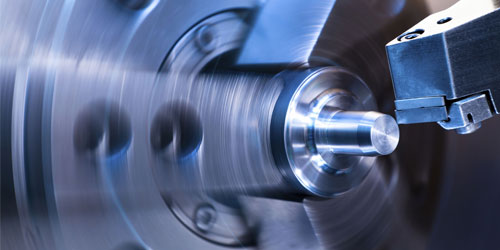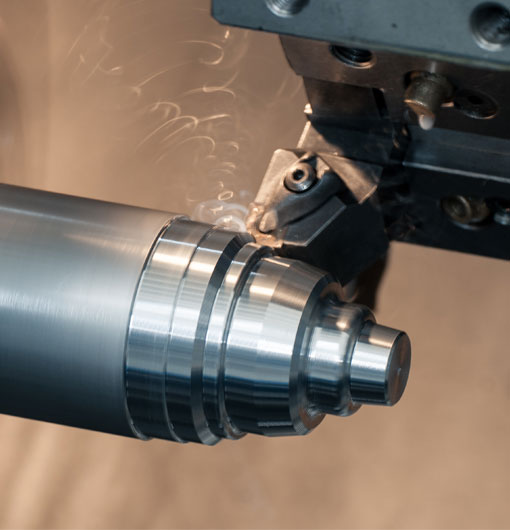CNC (Computer Numerical Control) turning is a manufacturing process through which computerized machines control the rotation of a workpiece while a cutting tool creates the desired shape. When properly employed, CNC turning can produce intricate shapes, sharp edges, and fine finishes with unwavering accuracy. Carbide inserts are often used in this process due to their high wear resistance, ability to maintain a sharp cutting edge, and the benefit of consistent performance under various cutting conditions. In this blog post, we will explore key tips, essential techniques, and best practices for effectively using carbide inserts in CNC turning operations.
A Primer on Carbide Inserts
Carbide inserts are cutting tools made from solid carbide or carbide-tipped shanks. They are widely used in CNC turning, as well as other machining processes, for their ability to maintain a sharp cutting edge, increased tool life, and improved surface quality. The most common types of carbide inserts include:
1. Sandwiched Carbide: A thin layer of carbide material is bonded to a steel substrate, offering moderate durability and a lower cost.
2. Solid Carbide: These complex, more expensive inserts provide higher strength, wear resistance, and performance, particularly under high cutting temperatures.
3. Carbide-Tipped: In this type of insert, the carbide material is brazed onto the cutting edge of a tool, providing improved wear resistance and tool life compared to high-speed steel.
Choosing the Right Carbide Insert
To achieve optimal results in CNC turning with carbide inserts, it's essential to pick the right insert for the job. Here are some key factors to consider:
1. Insert Material: Choose a carbide grade that matches your turning operation, factoring in the material being cut, cutting speed, and feed rate.
2. Insert Geometry: Ensure that the geometry of the insert aligns with your CNC turning application, as this will impact the surface finish, cutting forces, and chip control capabilities.
3. Insert Coating: Look for appropriate coatings, such as TiN, TiCN, or Al2O3, which can increase wear resistance, reduce friction, and enable higher cutting speeds.
Tips for CNC Turning with Carbide Inserts
1. Coolant: Utilize appropriate coolant to optimize insert performance and extend its life. Selecting an appropriate coolant also helps in achieving better chip control and surface finish.
2. Prevent Chipping: Ensure that your workpiece and cutting tool are well-secured to minimize vibrations and avoid chipping or insert damage.
3. Tool Overhang: Aim to reduce tool overhang to decrease the chance of deflection and maintain proper alignment during turning operations. This minimizes the possibility of insert damage and ensures a consistent cut.
4. Balancing Cutting Forces: Optimize cutting forces by modifying feed rates, cutting depths, and spindle speeds. Additionally, monitor chip formation to identify any imbalances and make necessary adjustments.
Techniques for Efficient CNC Turning
1. Adaptive Turning: In this approach, the cutting tool follows the contour of the workpiece's shape, maintaining constant engagement and reducing tool wear.
2. High-Speed Turning: By employing high-speed turning, you can increase productivity and improve surface finish quality, but ensure that you have appropriate coolant and heat dissipation methods to protect your carbide inserts.
3. Peck Turning: To avoid long, stringy chips, use peck turning, which involves taking small cuts, retracting the tool, and then returning to take another cut. This allows chips to break easily and avoid entanglement with the workpiece or cutting tool.
Best Practices for CNC Turning with Carbide Inserts
1. Prevent Tool Breakage: Regularly inspect your cutting tools to verify that they are free from cracks or signs of wear. Promptly replace any damaged tools to prevent tool breakage during machining operations.
2. Optimize Tool Life: Regularly monitor cutting speeds, feeds, and radial depths of cut. Adjust these parameters when necessary to achieve consistent performance, ensure optimal tool life, and maintain surface quality.
3. Appropriate Clamping: Employ proper clamping techniques to secure the workpiece and cutting tool during the turning operation. This reduces vibrations, improves stability, and ultimately enhances the quality of the final product.
Mastering the use of carbide inserts in CNC turning operations requires a thorough understanding of carbide materials, insert selection, and various techniques for optimizing the CNC turning process. By employing these tips, techniques, and best practices, you can consistently achieve high-quality results, maximize your tool life, and enhance the effectiveness of your CNC turning operations.
cnc turning carbide inserts













